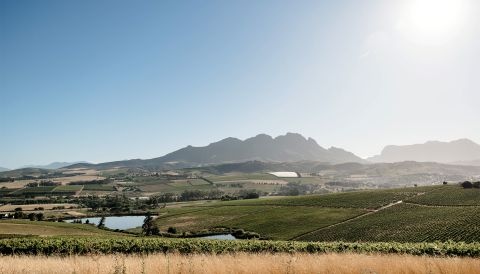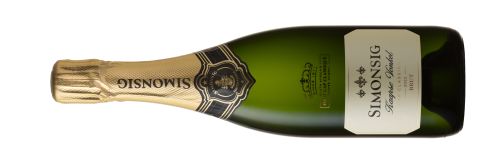It was the fourth wine on the fourth day of MW course days last month. The air conditioning whirred, pens scribbled, keyboards clacked, and I stared suspiciously at the wine in my glass. The question clearly stated, ‘Wines 1–4 are from four different countries. None of the wines are from Champagne.’ My brain was sluggish in generating any other possibilities, firmly stuck on how much the wine smelled like non-vintage champagne.
I was certain that it was a traditional-method Chardonnay and Pinot Noir blend and that it had been on its lees for a minimum of a year and a half – the yeasty, brioche-like notes were intense. The acid was ripping – just a few ticks down from the first wine in the flight (which I was convinced was English fizz). Could it possibly be from California? The fruit had enough ripeness vying with the acid to suggest that it could be further south in latitude.
As someone’s watch ticked along audibly, I sighed and wrote down ‘Anderson Valley’. Quality level? Very good. Around £30 I hazarded.
Groans of dismay filled the room when we received the crib sheet (likely not all because of this wine).
South Africa.
Cap Classique.
£15.75! What value!
I quickly checked our tasting notes database and found a heartening note from Richard on the 2021 I’d just tasted, ‘Sophisticated and developed nose with pithy texture and well-integrated fizz. Green apple, floral, bakery. Very classic, and could masquerade as champagne very easily.’
This wine, in fact, is the original Cap Classique, the wine that started South Africa’s Méthode Cap Classique industry before it was ever called that, from the producer that inspired more than 250 other producers to start making traditional-method sparkling – Simonsig.
When Frans Malan, the founder of Simonsig, began making and bottling wines in 1968, the KWV (Ko-operatiewe Wijnbouwers Vereniging van Zuid-Afrika) still controlled South Africa’s wine production, severely limiting the influx of plant material, setting quotas on wine production and maintaining their jurisdiction over the entire distribution network.
Malan started Simonsig anyway. And, after visiting Champagne in 1969, he decided to produce sparkling wine in addition to the still wines he was making. He bottled the first traditional-method sparkling wine in South Africa in 1971 and released it in 1973. He named the wine ‘Kaapse Vonkel’ or ‘sparkle of the Cape’. Because of limited plant material, the first rendition was made with Chenin Blanc. It wasn’t until 1987, after the KWV relaxed plant quarantine laws and the Vine Improvement Association had been founded, that the team at Simonsig was able to switch the blend to predominantly Pinot Noir and Chardonnay.
Now, 55 years on, with more than 15 varieties planted, the 300-ha estate (182 ha/450 acres under vine) could be a nursery unto itself – Chardonnay, Chenin Blanc, Sauvignon Blanc, Gewürztraminer, Verdelho, Bourboulenc, Picpoul Blanc, Pinotage, Pinot Noir, Pinot Meunier, Cabernet Sauvignon, Cabernet Franc, Merlot, Shiraz, Grenache, Mourvèdre all grace the property. The estate’s position at the foot of the Simonsberg mountain range provides a range of elevations from 50 to 280 m (164–919 ft) creating a variety of mesoclimates. Soils are sandstone, granite and shale. And while the area receives plenty of sunlight, the proximity to the coast and the south-easterly Cape Doctor winds provide ample cooling influence. Despite the success with such a diversity of plantings, the most lauded wines remain the estate’s traditional-method sparklers, which make up 50% of their production.
Grapes are harvested by hand early in the season to retain acidity and are direct pressed. In keeping with the standards in Champagne only the cuvée (or 102 litres per 160 kg of grapes) is used for the production of Kaapse Vonkel. The wine is then settled for 12–24 hours in stainless-steel tanks. 10% of the Chardonnay is transferred to neutral French oak barrels and the rest of the blend is transferred to another tank to begin fermentation. Fermentation takes place at 15 °C (59 °F) for 18–24 days. After primary fermentation has finished, the blend of Chardonnay, Pinot Noir, Pinot Meunier and, occasionally, Pinot Blanc is composed (in 2021 the blend was 53% Chardonnay, 46% Pinot Noir and 1% Pinot Meunier). The wine then receives an addition of liqueur de tirage before it is bottled and undergoes secondary fermentation. After 20 months on lees the wine is disgorged and receives a dosage that is well under the 12 g/l cut-off for ‘brut’ (in 2021 this was 6 g/l, in 2022 it was 3 g/l).
The result is a wine with strikingly intense notes of yeast and brioche complemented by zesty lemon notes, with a hint of red plum from the Pinots. The acid, even for sparkling, is spine-tinglingly high – both the 2021 and 2022 clock in at 7.8 g/l of total acidity (TA). For comparison, the three most recent English sparklings in our database that note TA come in at 7.4 g/l (Nyetimber), 8.2 g/l (Nyetimber) and 8.6 g/l (Chapel Down). So, yes, it truly does have English-equivalent acidity! But the acid is nicely balanced by a leesy roundness and delicate mousse.
I’d recommend that you drink either the 2021 or the 2022 over the next 4 or 5 years as they do seem to be beautifully developed immediately upon release.
For MW students who are wondering what the major markets are: around two-thirds of Simonsig’s Cap Classique production is sold in the local market while one-third is exported, with 17% of exports going to the UK, 16% to Germany, 14% to the UAE, 13% to Botswana, 11% to Réunion and 6% to Latvia. In total the wine reaches 50 different markets.
Wine-Searcher shows that the Kaapse Vonkel 2021 is available in the UK, Hungary, Sweden, Germany, the Netherlands, Italy, Hong Kong, Switzerland, France, Japan, Denmark, Singapore and, of course, South Africa. For those of us in the US, the 2022 is easier to procure and is just as good, if a bit lighter in body and dosage.
Members can access more than 100 tasting notes on South African sparkling wines as well as further notes on Simonsig's wines in our extensive tasting notes database.















